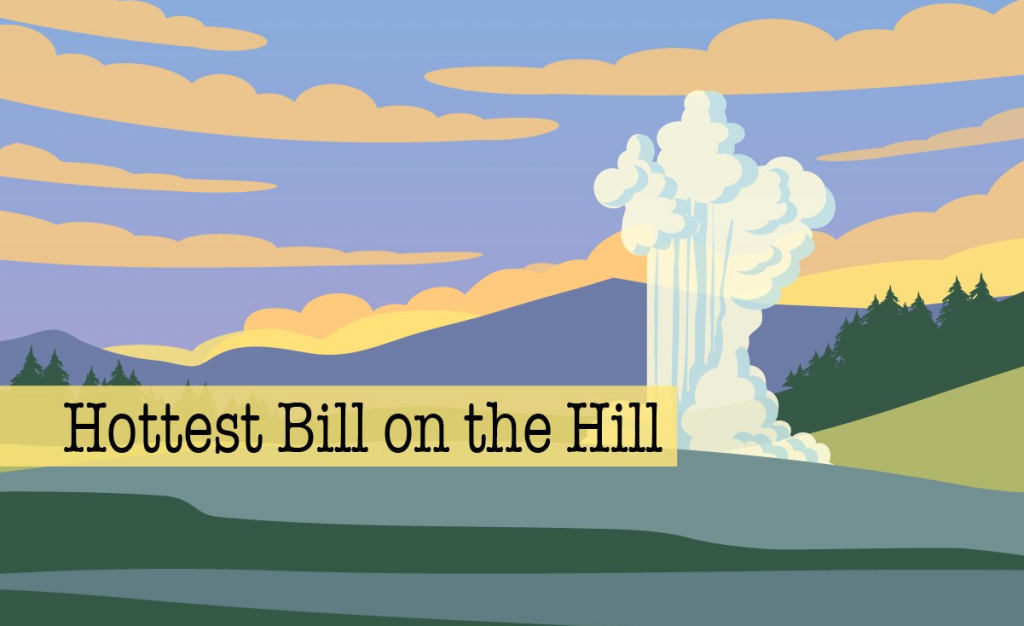Why new introduced legislation can provide an important boost to geothermal in the U.S.
Advancing geothermal energy and why new bipartisan legislation introduced to the U.S. Senate can help push technological development helping to boost geothermal energy development contributing to the U.S. energy system of the future, so an interesting Twitter thread by Tim Latimer of Fervo Energy.
In October this year, U.S. Sens. Lisa Murkowski, R-Alaska, and Joe Manchin, D-W.Va., introduced bipartisan legislation to accelerate geothermal energy development in the United States, see “Senate/ Republican News“.
The Advanced Geothermal Innovation Leadership Act of 2019 (the “AGILE” Act), we reported on it, includes provisions for research and development of both existing and enhanced geothermal systems, resource assessment updates, grant program authorization, and improved permitting.
This builds upon a hearing in June 2019, where geothermal experts gave answers and provided insights in what role geothermal energy could play in the energy mix of the United States.
In a thread on Twitter, Tim Latimer of Fervo Energy shared some of his thoughts on the legislation, describing it as “a critically important bill for our (the U.S.) clean energy future”.
He describes “geothermal is important because it’s emission free, works 24/7, lasts for decades, can produce lithium as a byproduct, and has wayyy more potential than currently used. The recent GeoVision study found it can supply 16% of US electricity.”
Today, 16% of US electricity production from geothermal would help us clean up the last 10-20% of the electric grid, as pointed out by @SteveDavisUCI (on Twitter), load-following electricity is still one of the toughest challenges for decarbonization.

“The AGILE act lays out a way to get this done, including new USGS studies, public-private field demonstrations, increases funding for strategic mineral (read: lithium) coproduction, and an expansion of the $140m FORGE geothermal test bed.”, so Tim Latimer referencing our article on the selection of the University of Utah site for the U.S. DOE FORGE project.
He describes that one has known about the massive potential for geothermal energy for a long time, at least since the MIT Future of Geothermal Report (pdf) came out in 2006. But there are new developments that make this the right time for a breakthrough and AGILE addresses those head on.
The report, “outlined a roadmap to get to 100 GW by 2050 that called for a 15-year, $1B research program. A big reason geothermal hasn’t broken through is this funding never materialized, actual funding since the report came out has been less than a third of that.”
“We’ve lost a decade of valuable time because advanced geothermal hasn’t been properly funded, but the AGILE Act fixes this by reauthorizing the Geothermal Technology Office’s funding at a much increased level of $150m per year”, so Tim.
There has also been a lot of innovation in oil and gas in the last decade. Some of the technologies that led to the Shale Revolution can have a transformative impact on geothermal and AGILE directs the Office of Fossil Energy to identify key tech to transfer.
Geothermal can also provide the materials for our clean energy future. Efforts are underway in California to mine huge reserves of lithium as geothermal coproduction and AGILE dedicates programs to accelerate strategic mineral mining. (as reported by the LA Times in an article from October 2019).
So he describes that Geothermal energy can:
- Grow 26-fold from current production
- Provide dispatchable, 24/7 clean energy
- Produce lithium and other strategic minerals as a byproduct
The AGILE Act is a major step forward to realizing geothermal’s role in the clean energy transition.
If you want to learn more,@ClearPathAction, produced this great explainer video that outlines how advanced geothermal can play a major role:
This is built on a Twitter thread by Tim Latimer, Co-Founder at Fervo Energy and republished with permission.
To read more about the AGILE Act, with a section-by-section description, check out this document (pdf).


















